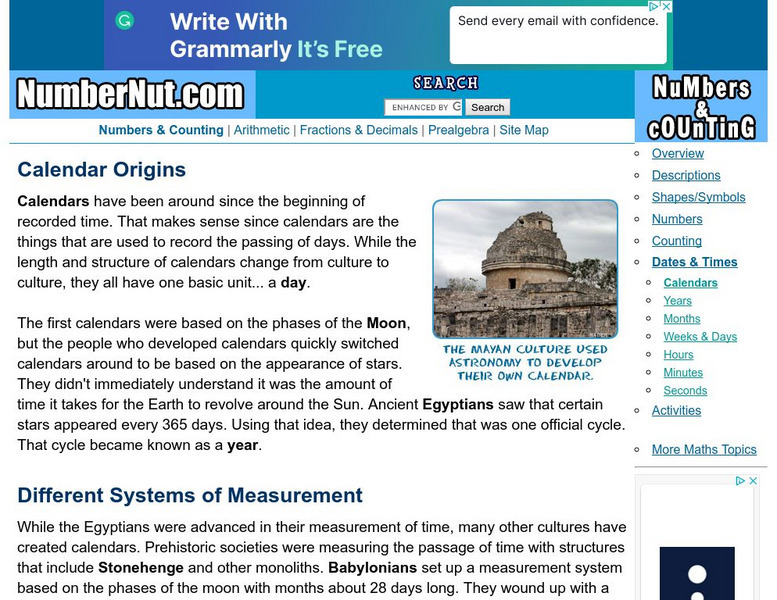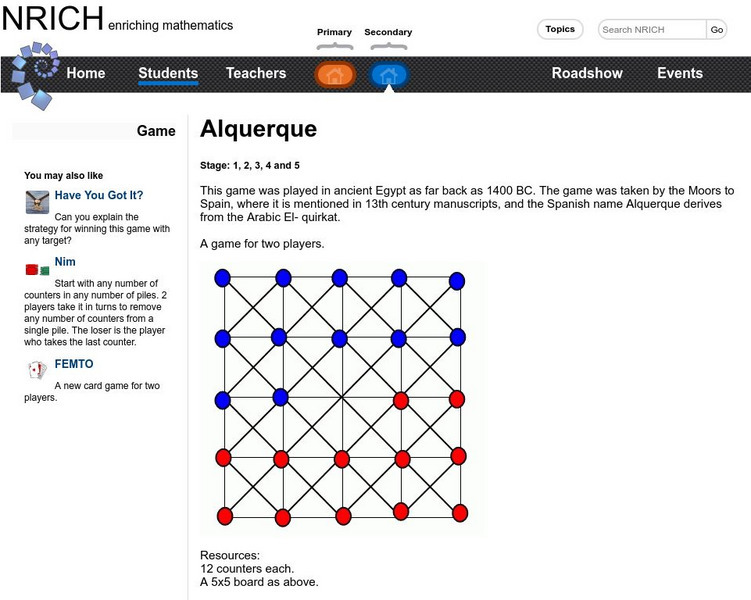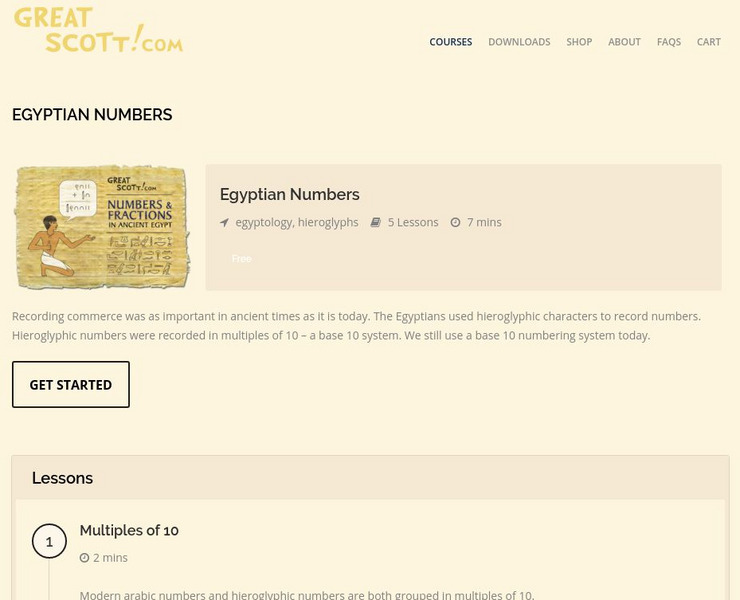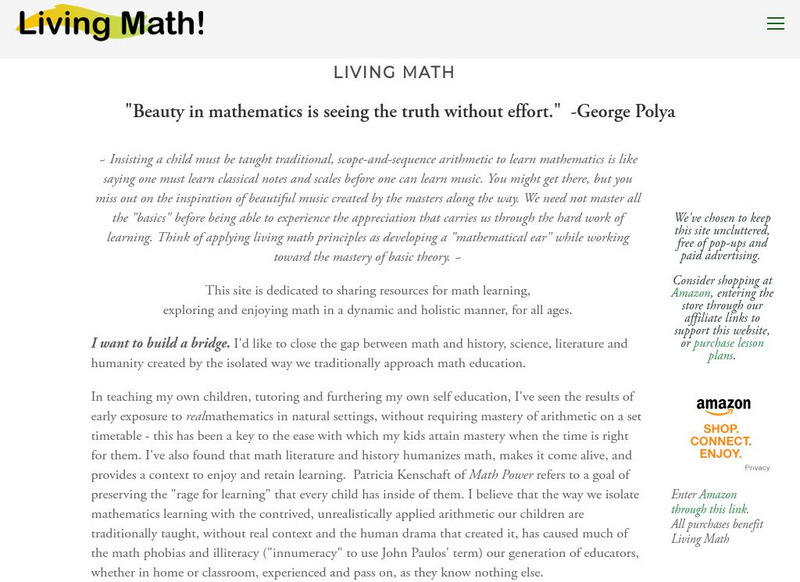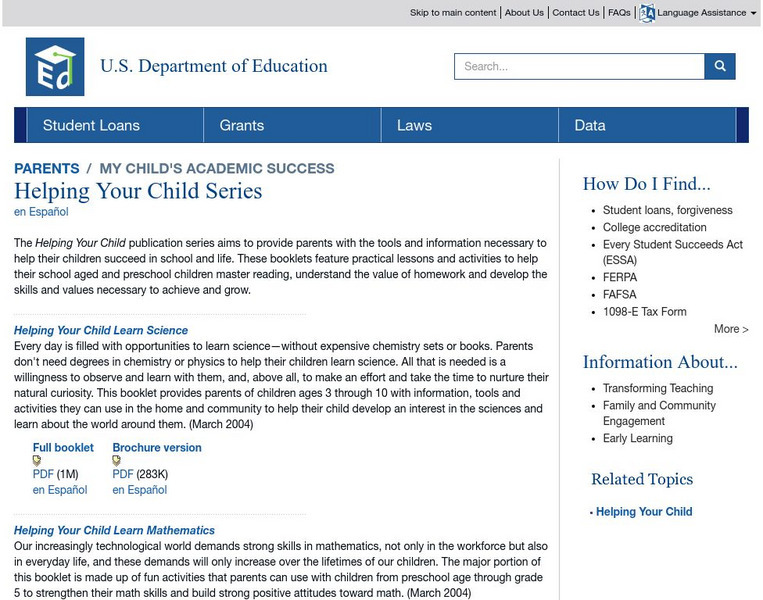Hi, what do you want to do?
NumberNut
Number Nut: Calendar Origins
History and mathematics merge in this lesson that explores the origin of the calendar. Learn how it all got started in this detailed lesson that includes a simple months of the year game and a more challenging time conversion game. Both...
University of Cambridge
University of Cambridge: Nrich: Alquerque an Egyptian Math Game
This is a board game played in Egypt in 1400 BCE. It requires strategy and to think several moves ahead.
Ministry of Education and Employment of Spain
Red Escolar: Un Problema De Caballos
In Spanish. In chess there are many mathematical problems related to the way the pieces move on the board. Chess is more than just a game. By playing chess students can develop their problem solving skills. Several chess activities are...
Other
Great Scott!: Hieroglyphs Numbers
Use this site to learn about the ancient Egyptian numbering system. Use the "converter" to the right to translate modern-day numbers to Egyptian hieroglyphs, or scroll to the bottom of the page to continue the journey and learn about...
Discovering Egypt
Mark Millmore's Ancient Egypt
This site provides a captivating tour through Egypt's past. Visit the ancient temples, the kings and queens of the past. Learn about the hieroglyphic form of communication. Additional links for extended information temples and hieroglyphs.
Alabama Learning Exchange
Alex: Battle to the Death: Adding Integers
The goal of this lesson is for students to use manipulatives to add integers, creating concepts rather than memorizing rules. This lesson will be related to the 300 Spartans who battled the invading Persians at the Battle of Thermopylae,...
Other
Living Math!
A homeschooling website with a focus on Mathematics. Provides articles, wide-ranging lists of recommended books, Math activity ideas, book reviews, and some sample lessons. (Note: Some links may no longer work.)
My Hero Project
My Hero: Galileo
"First to use a telescope to overserve the starts and planets," Galileo Galilei secretly published his work, which contradicted the Catholic Church's teachings. Use this site to learn about how Galileo's independence and courage made him...
US Department of Education
Ed.gove: Helping Your Child Series
Department of Education site for parents, including those home-schooling their children. It has bilingual materials with tips for helping your child learn English, history, mathematics, etc.; and more resources related to cultural...





